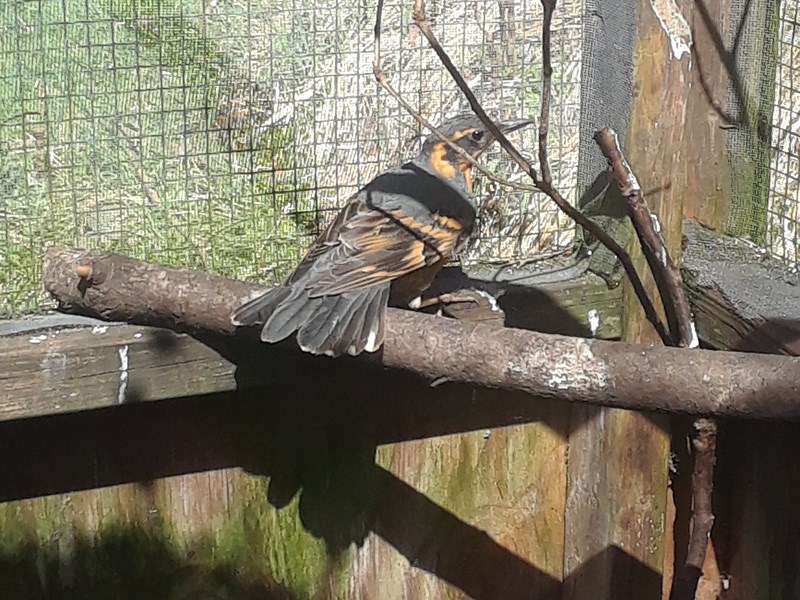Some people might wonder what this colourful bird is, as it usually appears with icy weather.
With many orange markings, it calls to mind a robin with its similar burnt orange breast that returns around the same time. But the varied thrush also has orange wing bars, eyebrows and throat patch.
The first needy one of this season came up from Halfmoon Bay, which does not have the rehab care we have in Powell River. It arrived via the Saltery Bay ferry, where PROWLS president Merrilee Prior picked it up.
With a big gaping wound caused by a cat, it was quickly placed on antibiotics. After a 10-day treatment and zipping around the flight cage, it was sent back and released a short distance from where it had been caught. Apparently, it took off like a shot and vanished into the bush.
A second varied thrush hit a window at Fernwood Avenue and Abbotsford Street and was knocked out. It had a concussion and a shoulder injury.
After an initial recovery it still had squinty eyes, indicating a bad headache, but eventually recovered and moved into the outdoor flight cage. It flew awkwardly because its wings were not yet symmetrical. After a bit more practice time, the beautiful and shy bird joined its local flock.
Caught by a feral cat close to the chicken coop at Springtime Nursery, a third varied thrush had a break in its wing high up near the shoulder and was unable to fly. Extremely vulnerable to stress, they are part of the 50 per cent of birds that, initially surviving a cat attack, do not make it. Put on a course of antibiotics and kept in a quiet space, they can be slow to recover.
Flooded with lactic acid from the stress of attack and in a strange place, they seize up and suffer cardiomyopathy, followed by heart attack. Nonetheless, certified bird rehab caretakers like ours do their best to give them every chance. With its wing healed it moved into the large flight cage, settled down and was soon able to fly and be released.
Because the varied thrush lives in old-growth forests containing large trees, logging and forest fragmentation is causing habitat loss that reduces their numbers. These birds don’t usually live in forest patches smaller than about 40 acres.
Around human habitation, varied thrushes have proven vulnerable to window strikes and collisions with cars. Because they nest and forage on the ground they are also subject to predation by domestic and feral cats. Their numbers are in steep decline.
Contributed photo



